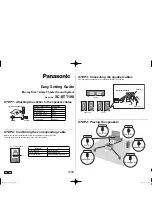
17
GB
–
Do not use electric tools where there is a risk of
fire or explosion.
3
Protect yourself from electric shock
–
Avoid physical contact with earthed parts (e.g.
pipes, radiators, electric ranges, cooling units).
4
Keep other persons away
–
Do not allow other persons, especially children,
to touch the electric tool or the cable. Keep them
away from your work area.
–
The operating person must be at least 18 years
of age; trainees must be at least 16 years, ho-
wever only under supervision.
5
Securely store unused electric tools
–
Unused electric tools should be stored in a dry,
elevated or closed location out of the reach of
children.
6
Do not overload your electric tool
–
They work better and more safely in the specified
output range.
7
Wear suitable clothing
–
When working outdoors, anti-slip footwear is
recommended.
–
Tie long hair back in a hair net.
8
Use protective equipment
–
Wear protective goggles.
–
Wear a mask when carrying out dust-creating
work.
9
Do not use the cable for purposes for which it is
not intended
–
Do not use the cable to pull the plug out of the
outlet. Protect the cable from heat, oil and sharp
edges.
10
Secure the workpiece
–
An additional support is necessary for long work-
pieces (table, trestle, etc.) in order to prevent the
machine from tipping over.
11
Avoid abnormal posture
–
Make sure that you have secure footing and
always maintain your balance.
12
Take care of your tools
–
Check the connection cable of the electric tool
regularly and have it replaced by a recognised
specialist when damaged.
–
Check extension cables regularly and replace
them when damaged.
13
Avoid inadvertent starting
–
Make sure that the switch is switched off when
plugging the plug into an outlet.
14
Use extension cables for outdoors
–
Only use approved and appropriately identified
extension cables for use outdoors.
–
Only use cable reels in the unrolled state.
15
Remain attentive
–
Pay attention to what you are doing. Remain
sensible when working. Do not use the electric
tool when you are distracted.
16
Check the electric tool for potential damage
–
Protective devices and other parts must be care-
fully inspected to ensure that they are fault-free
and function as intended prior to continued use
of the electric tool.
–
Damaged protective devices and parts must be
properly repaired or replaced by a recognised
workshop, insofar as nothing different is speci-
fied in the operating manual.
–
Damaged switches must be replaced at a custo-
mer service workshop.
–
Do not use any faulty or damaged connection
cables.
–
Do not use any electric tool on which the switch
cannot be switched on and off.
17
ATTENTION!
–
The use of other insertion tools and other acces-
sories can entail a risk of injury.
18
Have your electric tool repaired by a qualified
electrician
–
This electric tool conforms to the applicable
safety regulations. Repairs may only be perfor-
med by an electrician using original spare parts.
Otherwise accidents can occur.
•
The machine can only be operated by persons who
have thoroughly read and understood these Operat-
ing Instructions. The machine must not be oper-
ated by persons not sufficiently instructed or not in a
good health state.
•
Inspect the appliance visually before each use. Do
not use the appliance if any safety device is dam-
aged or worn out. Never remove any safety device.
•
Use the appliance only for the purpose specified in
these Operating Instructions.
•
Safety in the workplace is your responsibility.
•
Never leave the appliance unattended.
•
Put the appliance to a safe place if you need to in-
terrupt your work.
•
Never spray water on the machine or submerge it to
any liquid.
•
Do not use electric tools near flammable liquids or
gases.
•
Do not switch the appliance on if turned over or not
in the operating position.
•
Do not let other persons touch the appliance or ca-
ble.
•
After you finish working with the appliance, pull the
plug out of socket and check if the appliance is not
damaged.
•
The system voltage must correspond to the voltage
specified on the type label.
•
Any repairs can only be executed by an electrician.
•
Before putting the appliance into operation and after
any impact check it for any wear-out or damage and
have necessary repairs executed.
•
Never use spare parts and accessories not recom-
mended by the producer.
•
Use the appliance only in broad daylight or under
sufficient artificial lighting. Make sure no item causes
short-circuit on appliance contacts.
•
Lay all cables in a manner to prevent risk of trip and
to eliminate cable damage!
•
Wear protective clothing suitable for the given envi-
ronment the whole time you work and take suitable
preventive measures to prevent accidents.
Summary of Contents for WSE850
Page 3: ...3 1 3 4 6 5 1 2 9 8 7 2 6 5 4 3 1 2 ...
Page 4: ...5 4 6 5 10 ...
















































